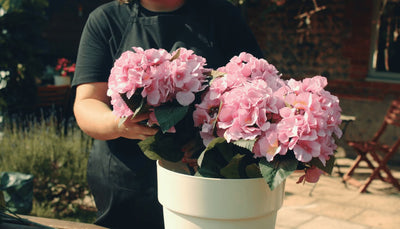
It’s beginning to look a lot like Christmas! Without a needle on the floor, our Christmas collection is here to bring instant, easy and unbelievably beautiful colour this festive season.

It’s beginning to look a lot like Christmas! Without a needle on the floor, our Christmas collection is here to bring instant, easy and unbelievably beautiful colour this festive season.
Explore our curated range of artificial plant gifts for every occasion.
Create your very own green zen space, hanging plant utopia or exotic bathroom spa with our lifelike artificial plants. Have fun creating instant updates and placing greenery wherever you want it without any of the hassles of caring for real plants.
Earn points, unlock perks, and enjoy exclusive discounts with Petal Rewards
Bring breath-taking colour to your home or workspace, give a lasting gift or preserve your big day with artificial wedding flowers.
Whether you want to create a jungle outdoors or indoors, our wide range of artificial trees has been crafted to perfectly mimic nature – even up-close.
Want a beautiful outdoor space without the hassle of gardening? Create the look you want, instantly, with our stunning range of premium fauxs.
Earn points, unlock perks, and enjoy exclusive discounts with Petal Rewards
Screening doesn't have to be dull. Shop our range of artificial plant screening options to beautify your fencing, add privacy to intimate areas of your garden or mask unsightly spots.
Earn points, unlock perks, and enjoy exclusive discounts with Petal Rewards
Finishing touches like pots and planters will make a huge difference to your artificial plants, trees, and flowers. A pot will help the plant blend (or stand out) into it's new home and it'll improve stability too.
Explore our curated range of artificial plant gifts for every occasion.
What could be better than unpacking your stunning new artificial plant, positioning it in pride of place and it looking absolutely perfect? Knowing you got yourself a bargain! Check out our special offers including our famous weekly wonders.
Earn points, unlock perks, and enjoy exclusive discounts with Petal Rewards
Bring every corner to life without the upkeep. Explore our space collections to find the perfect faux for your room.
Earn points, unlock perks, and enjoy exclusive discounts with Petal Rewards
We’re passionate about what we do and are committed to maintaining our position as the UK’s go to retailer of artificial plants, trees and flowers.
Got a question? Visit our FAQs for guides, delivery info, and other useful information.

Been bitten by the artificial plant bug? Here you will find inspiration, trends, research, news, competitions and anything else we think you might just LOVE. Welcome to our blog, plant-friends.
Be the first to hear about our offers and new arrivals, plus get a 10% off welcome bonus and exclusive subscriber-only deals straight to your inbox.